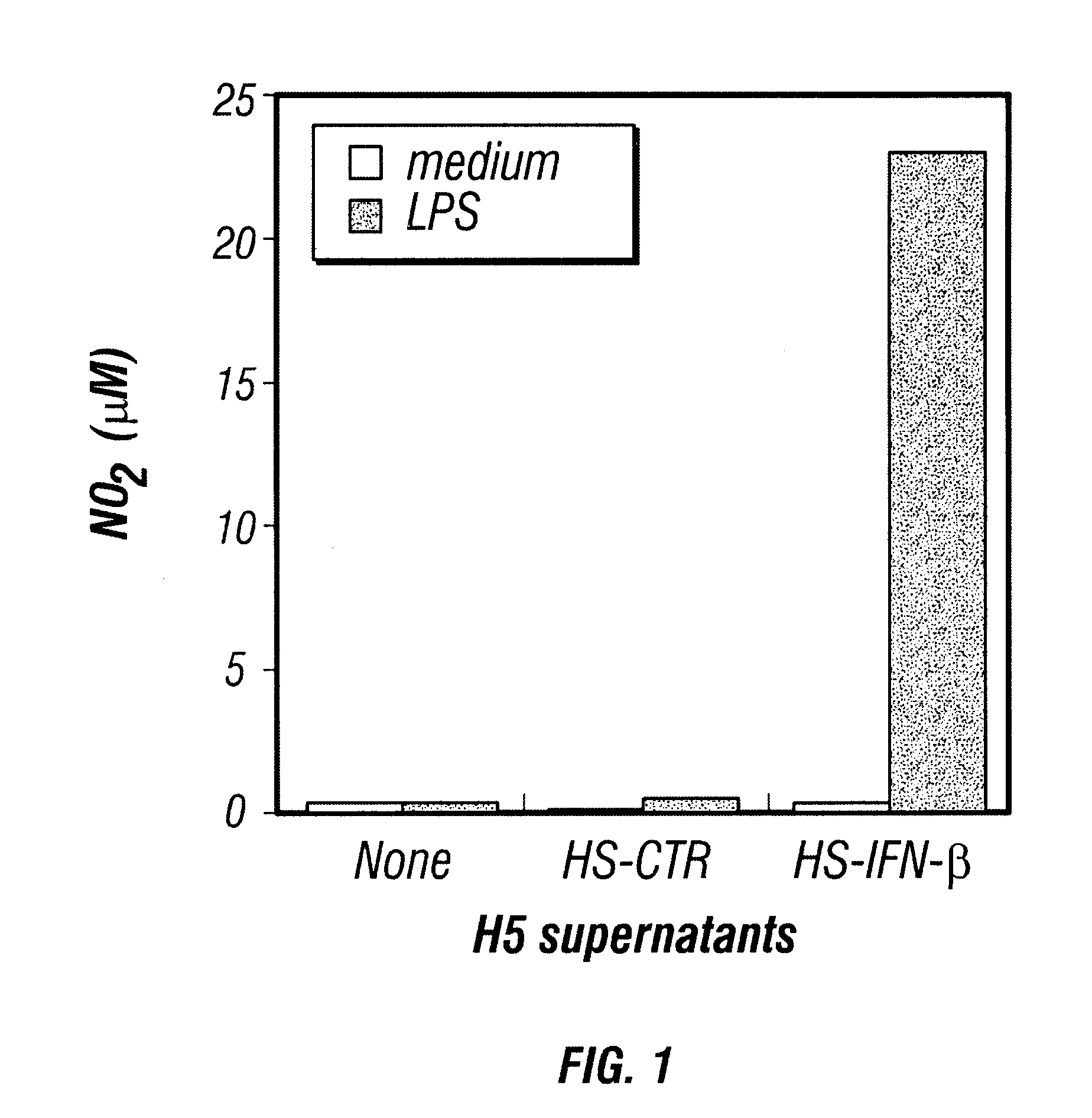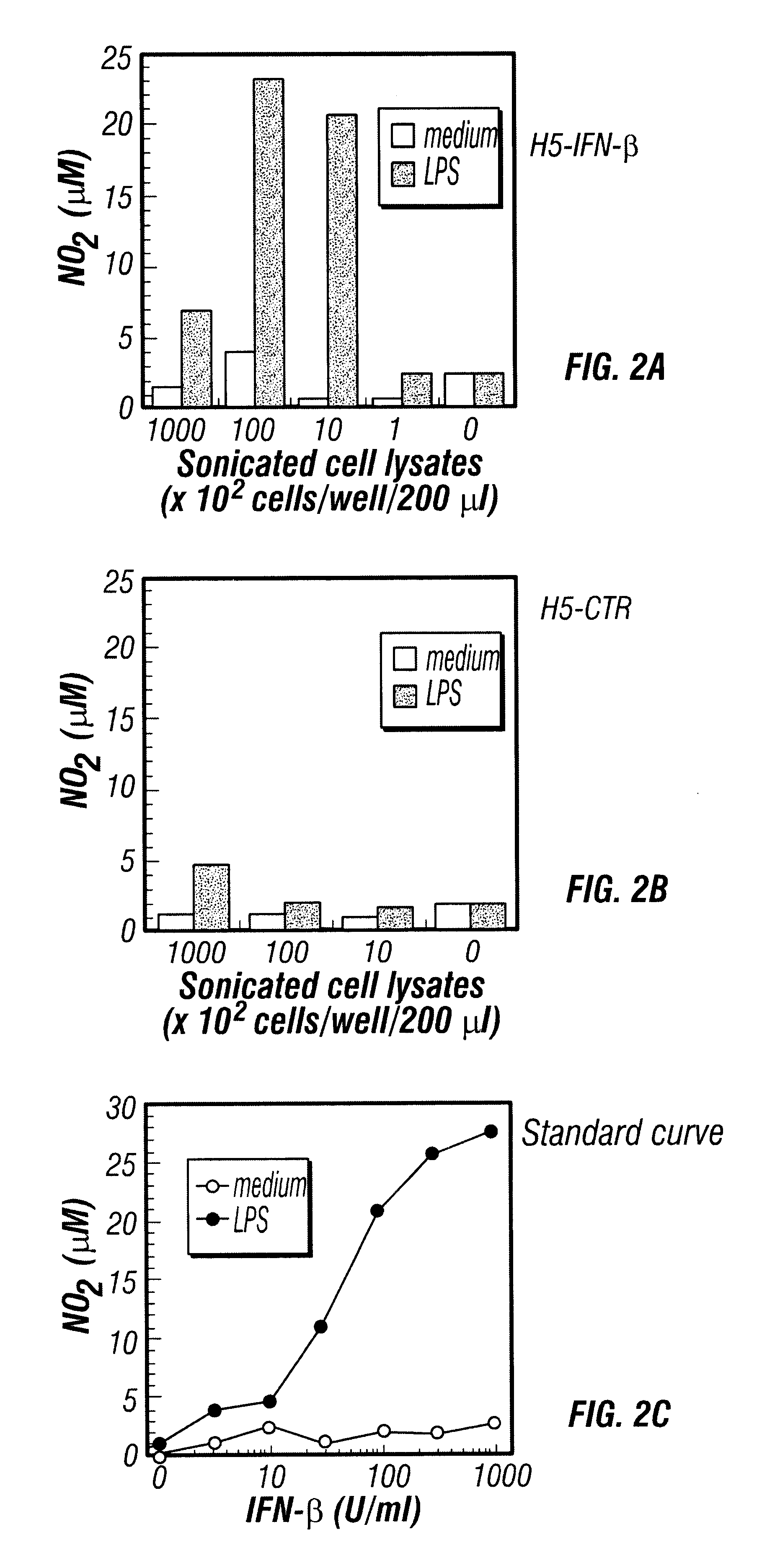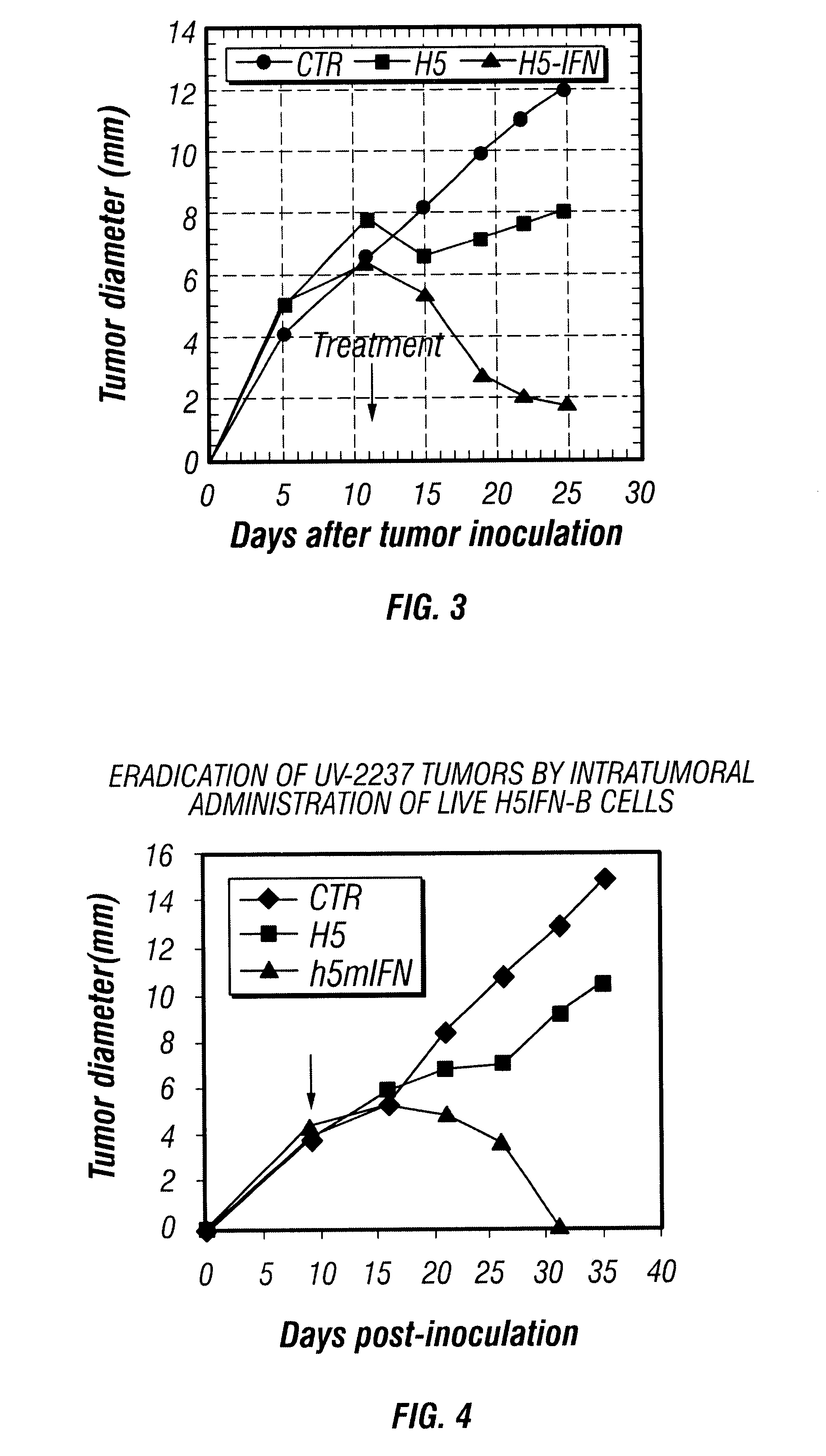Therapy of cancer by insect cells containing recombinant baculovirus encoding genes
a technology of baculovirus and insect cells, applied in the field of immunology, cancer therapy, molecular biology and cell biology, can solve the problems of limited recognition of tumor-associated antigens, insufficient immunological responses of growing neoplasms, and insufficient immunological responses of tumor cells, so as to suppress tumor growth
- Summary
- Abstract
- Description
- Claims
- Application Information
AI Technical Summary
Benefits of technology
Problems solved by technology
Method used
Image
Examples
example 1
5.1 Example 1
In Vitro Activation of Macrophages by H5 Cells Infected with Baculovirus Encoding IFN-.beta.
The H5 insect cell line (Invitrogen, Sorrento, Calif.) used in these examples was developed by the Boyce Thompson Institute for Plant Research, Ithaca, N.Y. It was originated from the ovarian cells of the cabbage looper, Trichoplusia ni. This cell line doubles in less than 24 h, grows well in monolayer, is adaptable to suspension cultures and serum-free medium and provides 5- to 10-fold higher secreted expression than Sf9 cells. The H5 insect cell line is primarily used for high expression of recombinant proteins.
A recombinant baculovirus encoding mouse interferon-.beta. (IFN-.beta.) gene was developed by the inventors, with a titer of about 5.times.10.sup.8 PFU / ml. After infection by baculovirus-IFN-.beta., H5 cells secreted high levels of IFN-.beta.. To prepare the baculovirus, the full coding region of the mouse IFN-.beta. cDNA was subcloned into the plasmid pxCMV that contain...
example 2
5.2 Example 2
In Vivo Tumor Regression Induced by H5 Cells Infected with Baculovirus Encoding Interferon-.beta.
C3H / HeN mice (n=10) were injected subcutaneously (s.c.) with viable syngeneic UV-2237 M2 fibrosarcoma cells. The UV-2237M cell line (Raz et al., 1981) was derived from spontaneous lung metastases produced by the UV2237 fibrosarcoma, which was originally induced in a C3H / HeN mouse by ultraviolet irradiation (Kripke, 1977). When the tumors reached 5-6 mm in diameter (day 9 of the study), 1.times.10.sup.6 untransfected H5 cells (H5) or 1.times.10.sup.6 H5 cells transfected with baculovirus encoding IFN-.beta. (H5-IFN-.beta.) were injected into the tumors. Subsequent to this single injection, all tumors (n=10) injected with H5-IFN-.beta. regressed, whereas tumors injected with saline (control) or H5 cells did not (FIG. 3). Although injection with H5 cells alone generally was not sufficient to promote tumor regression, in some cases it caused a decrease in tumor growth rate compa...
example 3
5.3 Example 3
Lack of Survival of H5 Cells In Vivo
H5-IFN-.beta. cells were radiolabeled with .sup.125 Iododeoxyuridine. As shown in Table 4, radiolabeled cells survived in culture in vitro for 120 hr with no evidence of radiotoxicity. In contrast, radiolabeled H5-IFN-.beta. cells intravenously injected into mice were eliminated within 48 h. These data indicated that the regression of tumors did not require viable H5-IFN-.beta. cells.
PUM
| Property | Measurement | Unit |
|---|---|---|
| Length | aaaaa | aaaaa |
| Length | aaaaa | aaaaa |
| Length | aaaaa | aaaaa |
Abstract
Description
Claims
Application Information
 Login to View More
Login to View More - R&D
- Intellectual Property
- Life Sciences
- Materials
- Tech Scout
- Unparalleled Data Quality
- Higher Quality Content
- 60% Fewer Hallucinations
Browse by: Latest US Patents, China's latest patents, Technical Efficacy Thesaurus, Application Domain, Technology Topic, Popular Technical Reports.
© 2025 PatSnap. All rights reserved.Legal|Privacy policy|Modern Slavery Act Transparency Statement|Sitemap|About US| Contact US: help@patsnap.com



